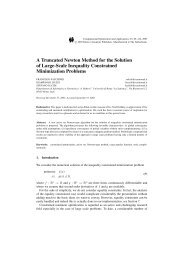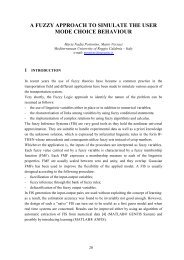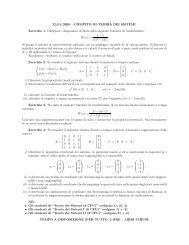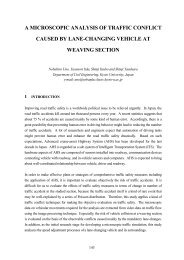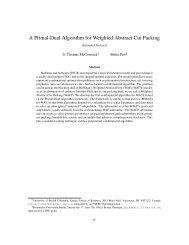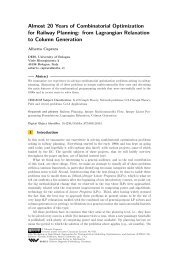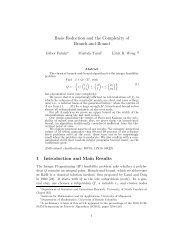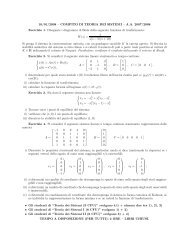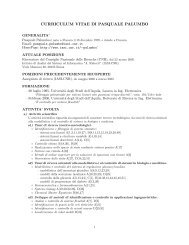A MULTI-AGENT DEMAND MODEL - UFRGS
A MULTI-AGENT DEMAND MODEL - UFRGS
A MULTI-AGENT DEMAND MODEL - UFRGS
Create successful ePaper yourself
Turn your PDF publications into a flip-book with our unique Google optimized e-Paper software.
In this work, we approach the task of modelling demand and representing driver behaviour<br />
by the adoption of agent-based techniques. Each driver is modelled as a rational agent<br />
featuring a BDI reasoning model, which was conceived on the basis of the framework<br />
proposed by Rao and Georgeff (1991). The underlining idea of their theory is the<br />
understanding of practical reasoning as the process of deciding, moment by moment, which<br />
action to perform in the furtherance of the individual’s goals (Wooldridge, 1999). As briefly<br />
described by Wooldridge (1999), a BDI agent is composed of base beliefs that represent the<br />
information about its environment (beliefs are updated through perceptions). On the basis of<br />
current beliefs and current intentions, an option generation function evaluates the options<br />
available to the agent (its desires). Current options represent possible courses of action, and<br />
a deliberation process determines the agent’s new intentions on the basis of its current<br />
beliefs, desires, and intentions (states of affair that it has committed to trying to bring<br />
about).<br />
In order to turn theory into practice, Rao (1996) specified the AgentSpeak(L) language to<br />
support the construction of BDI agents. Albeit it has not, as yet, been actually implemented,<br />
Machado and Bordini (2001) suggest AgentSpeak(L) also serves as a specification language<br />
for representing BDI agent models, which we have experienced in previous work (Rossetti<br />
et al., 2001). In practice, modelling a BDI agent in AgentSpeak(L) is accomplished simply<br />
by means of identifying its base beliefs and a set of non-instantiated plans. Intentions are<br />
dynamically generated during the reasoning process. Readers are referred to (Rao, 1996) for<br />
a detailed explanation and formal specification of the BDI logics and AgentSpeak(L).<br />
We have used JAM (Huber, 1999) to implement our demand model, which was specified in<br />
AgentSpeak(L). JAM is a Java-based architecture that combines the aspects of several<br />
leading-edge agent theories and intelligent agent frameworks, including the BDI logics. We<br />
rely on the operational semantics and on the constructors of JAM to implement and test our<br />
multi-agent demand approach. Another way for practical implementation of AgentSpeak(L)<br />
models is presented in (Machado and Bordini, 2001).<br />
3 MADAM: THE <strong>DEMAND</strong> <strong>MODEL</strong><br />
MADAM (Multi-Agent DemAnd Model) is an agent-based model aimed at representing<br />
variability in traffic demand by means of a population of BDI driver agents. Our approach<br />
relies on an extension to DRACULA (Dynamic Route Assignment Combining User<br />
Learning and microsimulAtion), which is a microscopic traffic simulation suite that has<br />
been developed in the Institute for Transport Studies, University of Leeds, UK (Liu et al.,<br />
1995).<br />
A key ingredient in the DRACULA model is variability, which rises from two centrally<br />
important concepts, namely the day-to-day dynamics and the within-day decision making<br />
process. The former is concerned with modelling how the state of the network changes over



